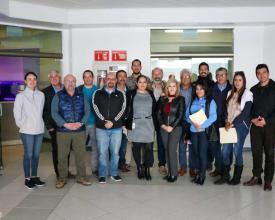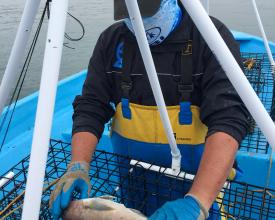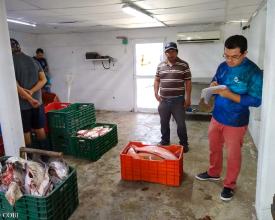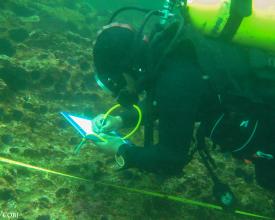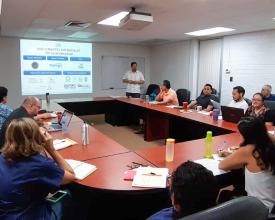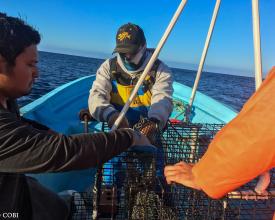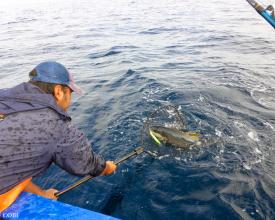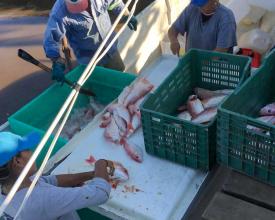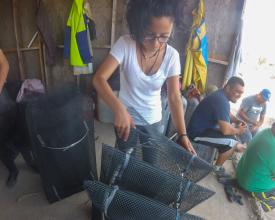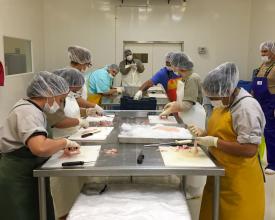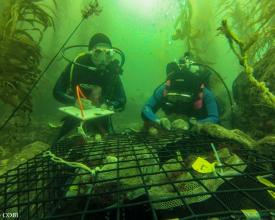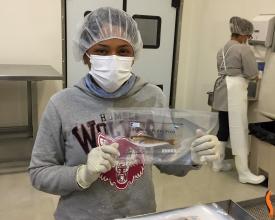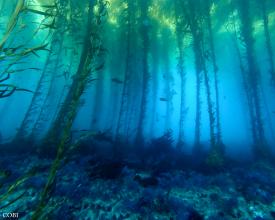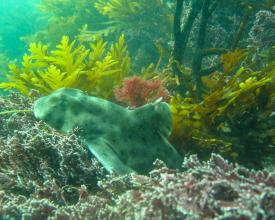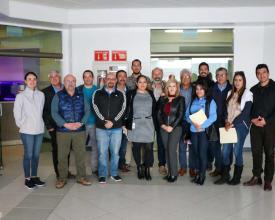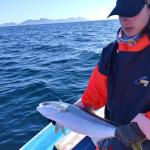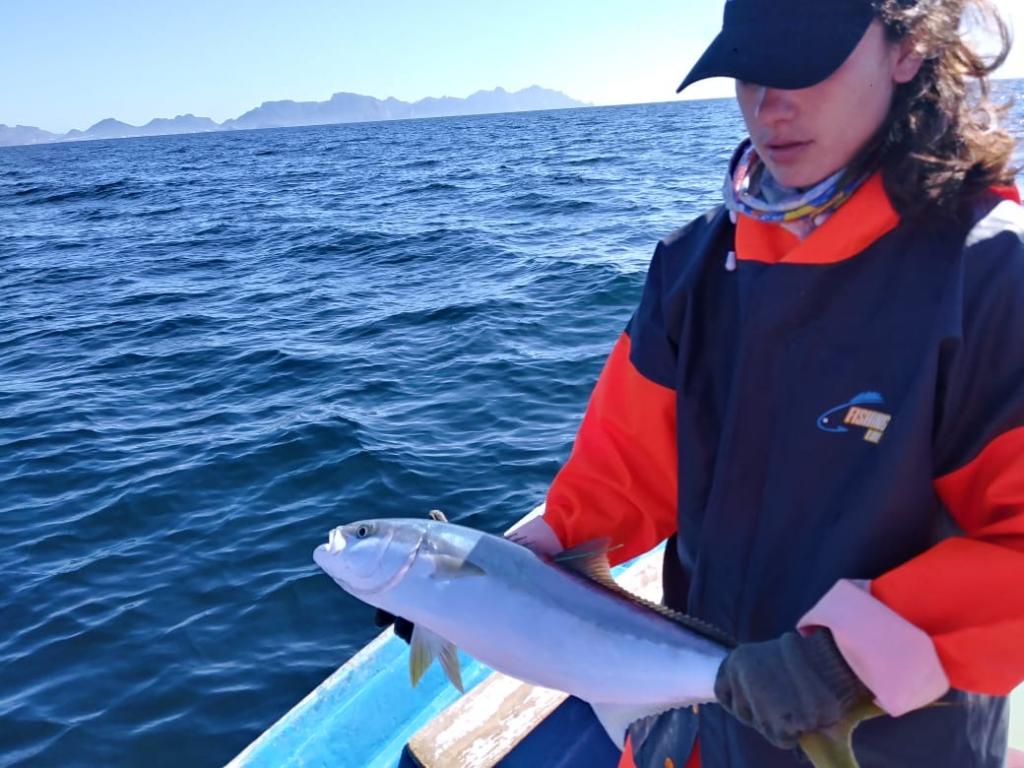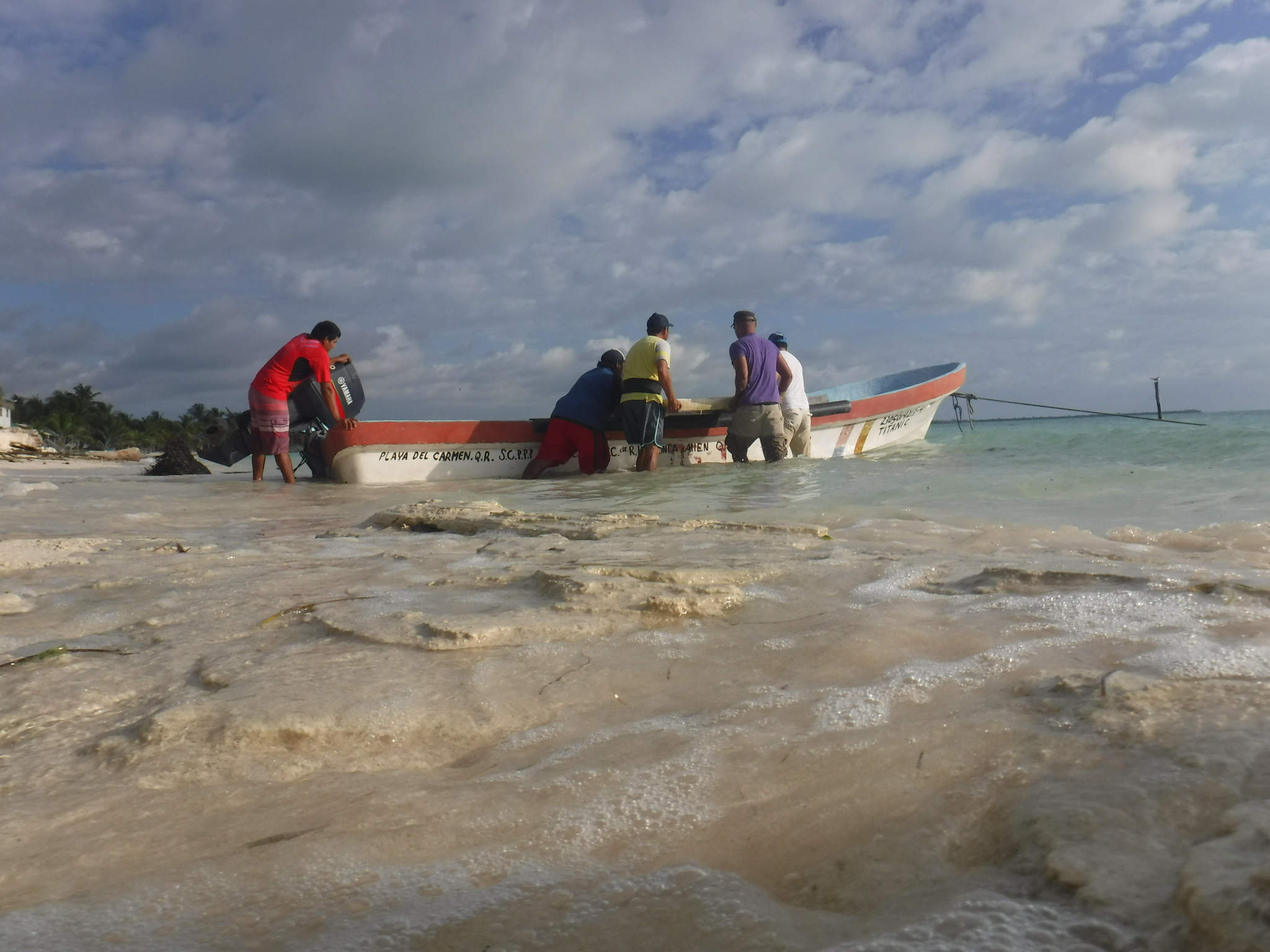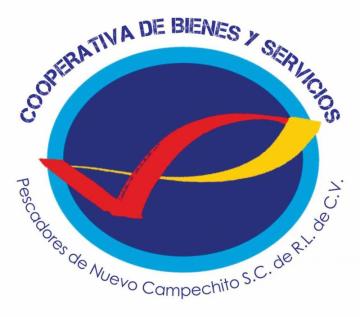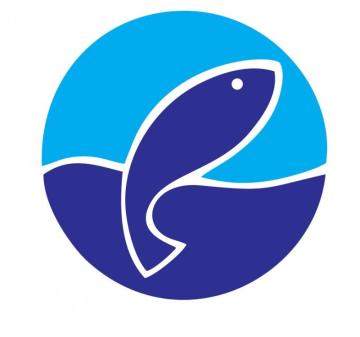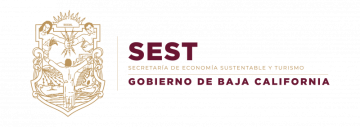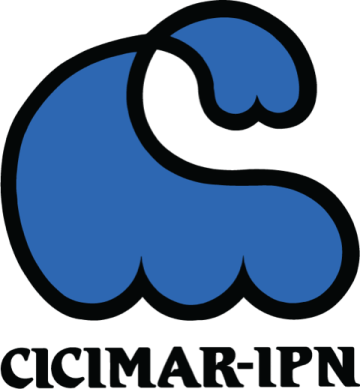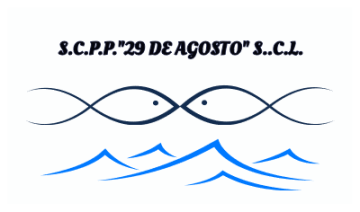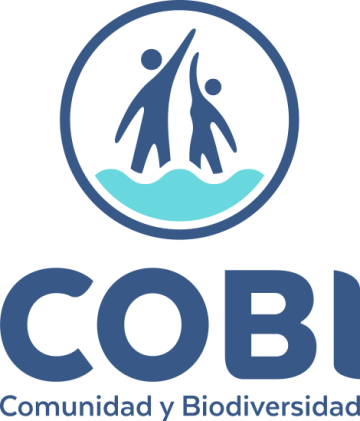
Sustainability in the fish fishery
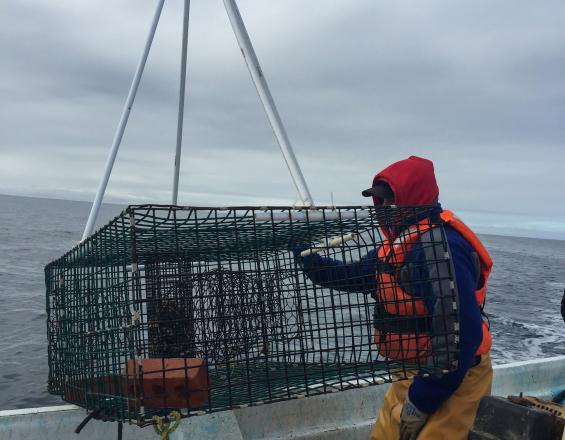
In Mexico, most small-scale fisheries that catch fish lack adequate fisheries and biological monitoring. This leaves information gaps and hinders their management. It also complicates the recognition of these fisheries by international standards, as well as the existence of a social and economic benefit for fishermen and fisherwomen. In order to achieve a sustainable fish fishery (excluding sharks and rays) in Mexico, the actors involved in this fishery joined together, under a co-management and co-financing scheme that incorporates gender equality, to establish a fishery monitoring system that provides information to generate improvements in the fishery and its management. This has positioned the fisherwomen and fishermen as pioneers in fisheries sustainability, setting an example for many other fishermen.
Context
Challenges addressed
1. To get fishermen and fisherwomen to commit and agree to start implementing different strategies to improve the management of their fisheries.
2. Tailor the implementation process for each fishing community so that fishermen and fisherwomen incorporate traditional knowledge into the different strategies.
3. Difficulty in obtaining official recognition of good practices and informal community agreements in fisheries management.
4. Because different species of fish are caught in this fishery, efforts must be made to record biological and fishing information from a representative sample of all species in the fishery.
5. Encourage co-investment (by fishing communities, the government sector, civil society organizations, academia and the market) to ensure the long-term sustainability of the resources.
Location
Process
Summary of the process
Small-scale fisheries face national and international challenges to achieve sustainability, as reported by Pronatura and CEA consultants, respectively. In Mexico, one of these challenges is the limited information faced by fish fisheries. This makes it difficult to generate comprehensive capture and harvesting strategies that can be implemented and evaluated by the sector, and that recognize traditional practices and knowledge. To address this challenge, the use of fishery monitoring through fishery logbooks was implemented. The baseline for harvesting strategies was established in a participatory manner.
In addition, fish fisheries face deficiencies in the management system (absence of specific objectives for the resource harvested) and the low participation of the different actors involved in the fishery. Therefore, we sought to establish alliances between all the actors involved in the fishery through co-management and co-financing (dependent components), from an egalitarian and equitable perspective with opportunities for participation for men and women in the fishery.
Building Blocks
Generating fishery monitoring and information analysis for fish
One of the most immediate challenges facing fish fisheries on their path to fishery sustainability is the implementation of fishery monitoring. This gathers all the information needed to understand how the fishery functions, including its economic and ecological components, allowing better management decisions to be made. To achieve this in the fish fishery, fishermen and fisherwomen were trained on the importance of monitoring their fisheries and how to carry it out. Together with the fishing communities, the government sector, academia and civil society organizations, a fishing logbook format was designed and approved by the government.
Subsequently, the logbooks were implemented in four fishing communities, adapting the process according to local needs. 2021 marked four years since the communities began monitoring their fisheries (specifically for different species of fish), which has allowed them to make inferences on the behavior of the fishery, plan their activities, monitor their income, etc.
Enabling factors
- Design the logbook with all the actors involved in the fishery (fishermen, government sector, academia, market and civil society organizations).
- Place a section in the logbook to record lengths and weights of fish caught.
- Ensure that fishermen have the necessary equipment to carry out fishery monitoring.
- Train fishermen on how to take parameters (e.g. fish lengths) for biological and fishery monitoring.
Lesson learned
- It is important to define how the fishers will be recording the logbooks. The process should be adapted to local conditions (the fishery, the internal organization of the cooperative and community), and maintain a standardized data collection methodology. It is possible for each person to do his or her logbook when returning from fishing or for only one person to be in charge (e.g. in the product reception area).
- Due to bycatch of certain species, it is important that fishermen and fisherwomen are trained to take photographs and to identify morphological characteristics and coloration patterns of bycatch species in order to identify them.
- The results of the analysis of the logbook information have been used to define management strategies, such as increasing the mesh size of the traps used or modifying the number of hooks to avoid catching smaller organisms.
Resources
Co-management in fish fishing
To achieve fisheries sustainability, it is necessary to have the participation of all stakeholders involved in decision making. In this way, they share responsibilities and rights for the use and management of resources, conflict resolution, and knowledge exchange. This is what is known as co-management of fisheries; where those involved become allies and collaborate to achieve the same objective.
To achieve this, all potential allies were first identified: fishing communities, the government sector, academia, civil society organizations and the market. They were invited to collaborate and a series of meetings were held with the participation of all stakeholders, where the project, its objectives and goals were designed. Stakeholders were invited to be part of the project and to contribute to it from their experience and field of work. This was formalized by signing a memorandum of understanding. Now, biannual meetings are held to present the progress made and establish the next goals, always seeking transparency and fostering trust and equitable participation.
Enabling factors
- Involve all the different stakeholders involved: fishermen and fisherwomen, government, academia, civil society organizations and the market.
- Establish roles and responsibilities within the project for each actor involved in order to create an environment of alliance among all.
- Hold meetings, at least twice a year, to present the progress made and propose new objectives.
- Recognize and validate traditional and community fisheries agreements before the government sector.
Lesson learned
- Train fishermen and fisherwomen on management tools, regulations, resource biology and the importance of generating information on their fishery. Knowing the rights and obligations derived from the right of access to fishery resources generates a greater sense of responsibility.
- Maintain efficient communication with stakeholders to identify opportunities and challenges. Also, this maintains the group's motivation to continue participating and getting involved in the project.
- In addition to the improvements that have been made in the fishery at the initiative of the producers, with the support of the government sector, academia and civil society organizations, this teamwork has generated positive effects on the social structure of the communities, providing them with more and better capacities to make their decisions.
- It also transfers knowledge to new generations, increases interest in participating and generates information and knowledge, promoting a sense of belonging to the ecosystem and resources.
Resources
Harvesting fish responsibly - strategies in two regions of Mexico
A harvesting strategy is a set of formally or traditionally agreed upon tools used to ensure good utilization of the resource. In the fish fishery, it is a challenge to define these strategies and evaluate whether they work or not, since this activity usually involves a large number of species with different biological characteristics.
In order to identify the capture strategies used in the fish fishery, a fishery monitoring system was implemented through logbooks. These include information on catches, effort, fishing gear, and catch size and weight. The information collected in the logbooks is analyzed every six months to learn about the fishery and identify opportunities for improvement. Two examples of improvements made by fishing communities have been to modify the fishing gear in order to have a more selective fishery. They have also decided to establish minimum catch size agreements for fish species. This information recorded by the fishermen is shared with the government sector in order to have more information to know the state of the fisheries and define sustainable management strategies.
Enabling factors
- Incorporate the empirical knowledge of fishermen and fisherwomen in the generation of the baseline on capture strategies.
- Generate and share knowledge on the biology of the species caught.
- Support the formalization of the capture strategies of the fishing community, when they are not recognized by the government sector.
- Achieve collaboration between scientific research and traditional knowledge to generate adequate capture strategies and contribute to their compliance.
Lesson learned
- Implementing fishery monitoring allows us to identify opportunities for improvement in the fishery and to see if its implementation is working properly.
- Slight modifications in fishing gear, based on the traditional knowledge of the communities, can have a great impact, both positive and negative, on fish populations and the ecosystem.
- Given the lack of information on the life cycle of the exploited species, it is necessary to generate this knowledge in the area of exploitation in order to have more robust results. In the meantime, precautionary measures should be taken.
- The harvesting strategy can be adapted to external factors (environmental, social and economic).
- A successful harvest strategy established by a fishing organization, and documented as an internal agreement, serves as a baseline for the generation of an official harvest strategy.
Resources
Recognizing the role of women in the fish fishery
When we think of fishing, we imagine spaces where men predominate and the only activity is the extraction of resources. In order to have a complete picture of the fishery, it is important to include post-harvest, pre-harvest and complementary activities. This allows us to know the fishery in more detail and to identify and recognize the work carried out by fishermen and fisherwomen.
Since 2015, COBI has participated in implementing fishery improvement projects in collaboration with the productive sector. In addition to environmental improvements, these projects currently seek social improvements that include gender equality. At the beginning of these projects, it was identified that the work done by women, not being extractive work, was not recognized as part of the fishery, a paradigm that is being broken with years of work.
Enabling factors
- It should be recognized that the fish fishery is made up of different activities, not only extraction.
- Include women in decision making by encouraging and formalizing their participation and membership.
- Implement training in fisheries, biological and oceanographic monitoring, with a gender perspective.
- Offer administrative and technical positions to trained women.
- Invite them to participate in national and international forums as representatives of their fisheries to empower them in their projects and activities.
Lesson learned
- Fishermen have recognized that women have a great capacity to develop in different stages of the fish fishery.
- The empowerment of women fishermen has been observed and successfully recognized in the areas of marketing, international standard certifications, and fishery, oceanographic and biological monitoring.
- The collaboration between men and women in the fishery has generated positive effects and strengthened the bonds between the members of the fishery, which is projected to the community.
- The fisherwomen have taken pride in their tasks and have generated a sense of belonging and identification with their communities.
- Including a gender perspective in the fishery is not simple, but it is a positive process that changes the dynamics of the fishery and its communities.
Resources
Modeling the ecosystem with little data
By their nature, small-scale fisheries tend to have limited, poorly systematized data and short time scales. This scarcity of information represents a challenge for understanding, for example, the interaction of fishing gear with the ecosystem and its impact on the habitat; such information is fundamental in the implementation of a fishery improvement project. Around the world, different methodologies have been developed to generate information on the impacts of the fishery on the ecosystem; one of them is the modeling based on the Ecopath program with Ecosim.
COBI used this tool including information generated by fishermen and fisherwomen through fishing logs, as well as biological and ecological information for the species that inhabit the fishing zones. In addition, to strengthen the model, the traditional ecological knowledge of the fishing communities was integrated through the application of interviews, from which relevant information was obtained on the diet of the species, their geographic distribution, reproductive season and sightings.
Enabling factors
- That fishermen and fisherwomen are generating information on fisheries through fisheries monitoring.
- It is important to integrate the traditional knowledge of fishermen and fisherwomen, since they have a large amount of important information about their natural environment and species.
- The results must be shared with the people of the fishing community, so that they value and appropriate their knowledge.
Lesson learned
- The process to obtain the results from Ecopath modeling with Ecosim can take about six months, since it is necessary to search for information, interview people in the community, analyze the information and create the models.
- It is important to socialize with the fishermen the importance and benefits of knowing the effects of the fishery on the ecosystem, and to let them know how their traditional knowledge is integrated in order to obtain more robust information for ecosystem management.
- The interviews conducted with the fishermen to record their traditional knowledge were long (approx. 40 minutes), which sometimes caused the interviewee to lose interest. In addition, given the time needed to conduct each of the interviews, the availability of time to interview more members could be scarce.
Co-investment to achieve fishery sustainability
To achieve success in the sustainability of fishery resources, there must be active participation of various stakeholders: fishing communities, government sector, academia, civil society organizations and the market, among the most important. In 2019, COBI began monitoring the costs (monetary and non-monetary) associated with the implementation and development of fishery improvement projects. From this exercise, it was documented that generally at the beginning of the projects, philanthropy makes the largest economic investment through CSOs, while fishing communities make it in a non-monetary way (e.g. by making their boats available for the activities), and other actors also participate (e.g., government agencies or academia). The objective of community co-investment is that over time the fishing communities become organized and committed to continue paying the expenses associated with this type of project, and achieve greater financial autonomy. COBI and the fishing communities developed a written strategy with a five-year term, in which the communities commit to maintain a gradual percentage of economic contributions to achieve co-responsibility and autonomy of the project.
Enabling factors
- Stakeholders are aware of project costs and have a gradual financial strategy for co-investment.
- Stakeholders have transparent and accountable processes in place to build trust and sustain fishery improvement projects over the long term.
Lesson learned
- Mapping the stakeholders in the co-management of the fishery from the beginning. This makes it possible to make visible all those who can/should participate in the financial contributions of improvement practices and project monitoring.
- Integrating and training all actors involved in the value chain on the importance and benefits of being co-investors in fishery improvements.
- Consider monetary and non-monetary contributions (e.g. human capital, time invested, data/information generation, infrastructure-meeting space). This allows valuing, recognizing, and making visible the contributions and commitment to sustainable fisheries from each sector.
- Achieving co-investment is not a simple process, as it involves financial issues. For this reason, it is necessary to train participants and make them recognize its importance.
Impacts
1. Regional, national and Latin American public recognition and commitment to good management and governance of the fishery.
2. The fishery has managed to meet and improve some of the indicators established by the Marine Stewardship Council (MSC), due to good fishery management and better available information, a process that continues to be carried out. This has added value to the product, which is recognized in preferential market segments.
3. The generation of information for the proper management of the fishery, through a system of fishing and environmental monitoring of the artisanal fleet.
4. The fishery operates in a sustainable manner, establishing minimum catch sizes.
5. Fishing is more selective through the implementation of best practices; larger fish are caught and bycatch is reduced by modifying fishing gear.
6. Inter-institutional collaboration between the productive sector, the government sector, and the private sector for the management of the fishery.
7. The fishing communities have become involved and have taken ownership of the project, providing optimal follow-up and becoming aware of the importance of sustainable fishing.
8. The exchange of knowledge and best practices among fisherwomen and fishermen from different communities has been promoted.
Beneficiaries
About 1,000 artisanal fisherwomen and fishermen in four Mexican states.
Sustainable Development Goals
Story
In Mexico, fishermen and fisherwomen are making efforts to have better management and knowledge of their fisheries. They have implemented fishery monitoring focused on different fish species through fishing logs. This allows them to obtain information and keep track of their fishery. This information is shared with different sectors (academia, government and civil society organizations). Now, other fishing organizations have requested the support of these fishermen and fisherwomen to implement fishery improvement projects, optimize their fisheries, and to approach or reach international sustainability standards. Four fishing cooperatives have become national pioneers and leaders in fisheries sustainability, which makes their communities proud and motivates fishermen and fisherwomen to continue and improve their work around fisheries.



